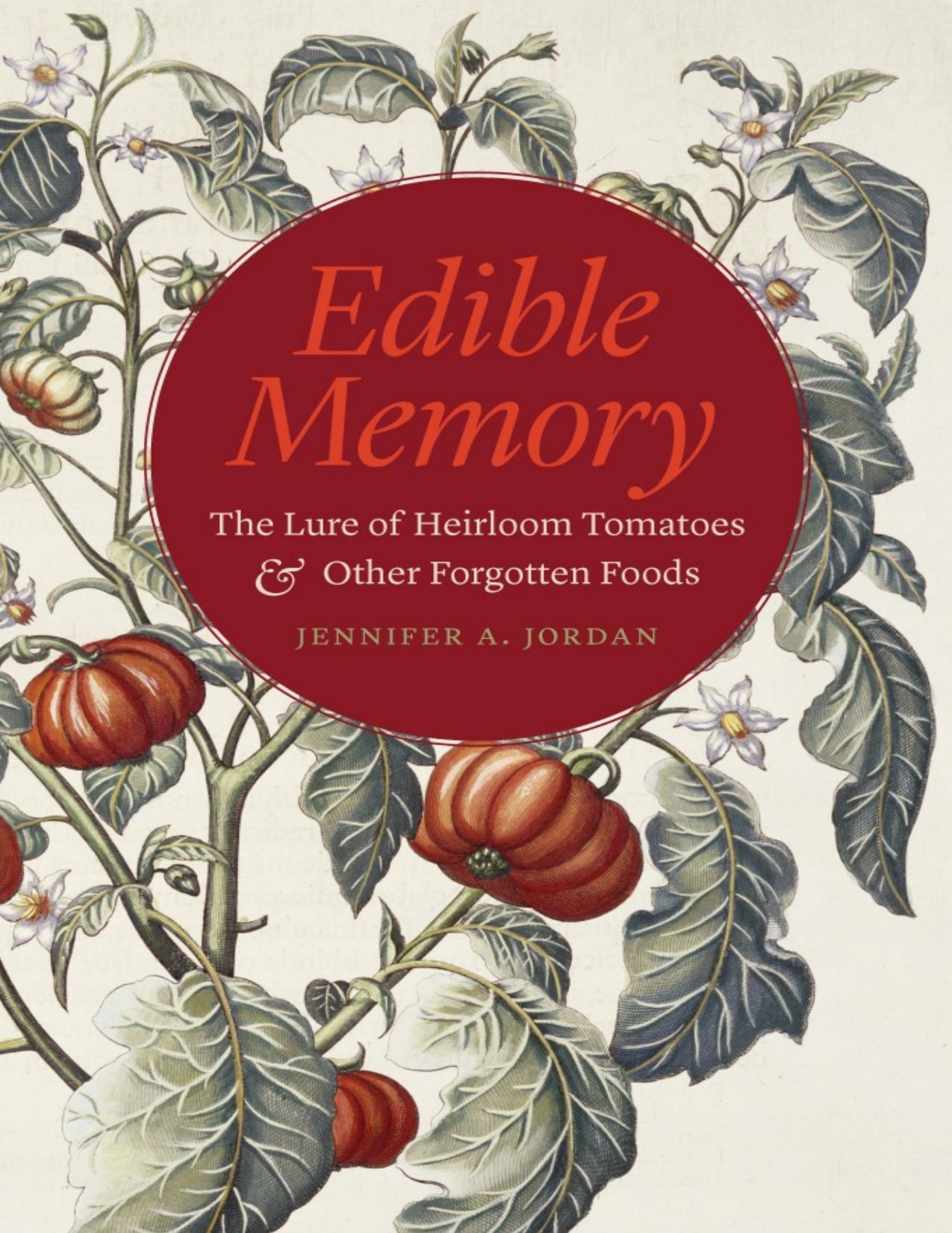Edible Memory: The Lure of Heirloom Tomatoes and Other Forgotten Foods by Jennifer A. Jordan

Author:Jennifer A. Jordan [Jordan, Jennifer A.]
Language: eng
Format: epub, pdf
ISBN: 9780226228242
Publisher: University of Chicago Press
Published: 2015-02-24T16:00:00+00:00
• 6 •
Lost Plums & Found Mangoes
AS WITH VEGETABLES, rare and nearly forgotten fruits speak to global histories and memory (and forgetting) both private and collective, and flourish under the care of individual farmers and small groups of enthusiasts. One of the many people preserving fruit biodiversity is Andy Mariani. His orchards on the edge of Silicon Valley, tucked between subdivisions and dry golden hills, contain a rich reserve of stone fruit germplasm, and acres of vibrant, thriving trees.1 This orchard is in many ways emblematic of the concept of heirloom food—a pocket of biodiversity including fruit with long histories connected to global movements and individual appetites. When I visited the orchard one summer, I arrived a little early on a Saturday morning, taking an exit I’d never used before off a freeway I’ve known my entire life, Highway 101, heading into the Santa Clara Valley. As I approached the turnoff, the sun broke through the fog, revealing housing developments creeping up into the yellow hills. As the road wound down the off ramp and toward the orchard, a new shopping complex of big box stores announced its grand opening, and row upon row of townhouses and McMansions filled this part of the valley. I drove by an abandoned orchard, a few unruly fruit trees in dry scrubby ground. It’s easiest to see the orchard remnants in the springtime, when telltale white and pink blossoms peek out above backyard fences, the wild edges of office parks, and highway rights-of-way. There are also many California microclimates—stone fruit thrives on the outskirts of Silicon Valley, somewhat protected from the maritime fog and enjoying copious summertime heat and sunshine. An hour away, where I grew up, only apple trees could tolerate the pea soup fog of our summers.
Growing up, I’d always heard that the Santa Clara Valley was once filled with fruit trees, and each time we drove through on a family trip my father lamented their displacement by tract homes. So it surprised me to hear from Mariani that much of the area had actually been home to vineyards long before the valley was filled with fruit trees. Fruit trees began to displace the vineyards in part because of Prohibition, although wine-making continued in the area, both officially for religious purposes, and unofficially for other purposes. But the orchards also grew more widespread because of improvements in irrigation (the vineyards were dryland farmed, while the stone trees required irrigation), and the potential, at the time, for fruit trees to offer greater profits—a reversal of today, where vineyards are highly profitable and spreading across the state.2
Of course, for some people stone fruit is even easier to turn into alcohol than grapes are—a couple of fruit trees, a home-built still, and you’re just a bit shy of a bottle of plum brandy or apricot schnapps, things many central European farmers made on the side (and often out of view of the tax authorities) and handed out to landless friends in unlabeled bottles. When I
Download
Edible Memory: The Lure of Heirloom Tomatoes and Other Forgotten Foods by Jennifer A. Jordan.pdf
This site does not store any files on its server. We only index and link to content provided by other sites. Please contact the content providers to delete copyright contents if any and email us, we'll remove relevant links or contents immediately.
Abraham Lincoln in the Kitchen by Rae Katherine Eighmey(713)
Catching Fire: How Cooking Made Us Human by Richard Wrangham(683)
An Edible History of Humanity by Tom Standage(675)
Food of the Gods by Terence McKenna(674)
Recipes for Thought by Wall Wendy(610)
Salt: A World History by Mark Kurlansky(594)
The Omnivore's Dilemma by Michael Pollan(584)
Sugar by James Walvin(583)
La Cocina Mexicana by Marilyn Tausend(479)
Empires of Food by Andrew Rimas(475)
Jubilee by Tipton-Martin Toni(458)
The omnivore's dilemma: a natural history of four meals by Michael Pollan(457)
101 Things I Learned® in Culinary School by Louis Eguaras & Matthew Frederick(450)
The Medieval Cook by Bridget Ann Henisch(446)
Cocktails Across America by Diane Lapis(437)
A Woman's Place by Deepi Ahluwalia(429)
97 Orchard: An Edible History of Five Immigrant Families in One New York Tenement by Jane Ziegelman(423)
The Invention of the Restaurant by Rebecca L. Spang(413)
The Food of a Younger Land by Mark Kurlansky(396)
